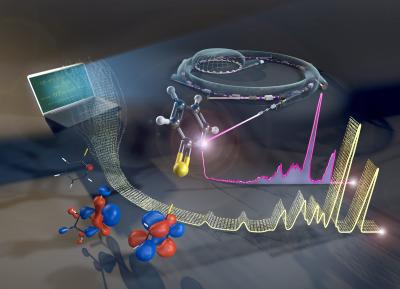
Credit: Martin Künsting /HZB
Molecules consisting of many atoms are complex structures. The outer electrons are distributed among the different orbitals, and their shape and occupation determine the chemical behaviour and reactivity of the molecule. The configuration of these orbitals can be analysed experimentally. Synchrotron sources such as BESSY II provide a method for this purpose: Resonant inelastic X-ray scattering (RIXS). However, to obtain information about the orbitals from experimental data, quantum chemical simulations are necessary. Typical computing times for larger molecules take weeks, even on high-performance computers.
Speeding up the evaluation
“Up to now, these calculations have mostly been carried out subsequent to the measurements”, explains theoretical chemist Dr. Vinicius Vaz da Cruz, postdoc in Prof. Dr Alexander Föhlisch’s team. Together with the RIXS expert Dr. Sebastian Eckert, also a postdoc in Föhlisch’s team, they have developed a sophisticated new procedure that speeds up the evaluation many times over.
“With our method, it takes a few minutes and we don’t need a super-computer for this, it works on desktop machines,” says Eckert. The HZB scientists have tested the method on the molecule 2-thiopyridone, a model system for proton transfer, which are essential processes in living cells and organisms. Despite the short computing time, the results are precise enough to be very useful.
“This is a huge step forward,” emphasises Föhlisch. “We can run through many options in advance and get to know the molecule, so to speak. In addition, this method also makes it possible to simulate far more complex molecules and to interpret the experimentally obtained data in a meaningful way”. Experimental physicist Eckert adds: “We can now also run the simulations during the measurement and see immediately where it might be particularly exciting to take a closer look”.
The procedure is an extension of the well established and highly efficient time-dependent density functional theory, which is much faster than the traditional concepts to simulate the RIXS process. “The simplicity of the method allows for a large degree of automatization,” says Vaz da Cruz: “It can be used like a black box.”
###
Media Contact
Antonia Roetger
[email protected]
Original Source
https:/
Related Journal Article
http://dx.




